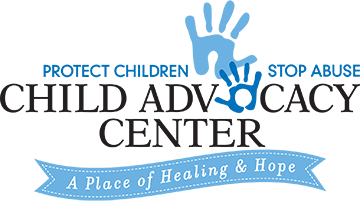
For the past few weeks, we have written about the impacts caused by serious child maltreatment on children, families, and caretakers. The consequences can be severe, life altering, and lifelong. We considered how supportive, nurturing communities can significantly buffer victims from further harms, and considered the preventative benefits afforded when communities build developmentally appropriate systems that reduce adversity while encouraging resilience. Child maltreatment often affects communities as well, rippling through neighborhoods, service agencies (e.g., child and family-serving programs), faith organizations, schools, etc. Therefore, it is not any one agency’s responsibility to prevent it, nor can they. It is everyone’s responsibility. Children live in an ecosystem that includes their homes, families, neighborhoods, schools, and other institutions or agencies. Each plays a role in linking, leveraging, and offering safety and positive environments for children to grow and thrive. When any individual setting becomes threatening or harmful, communities can be experienced as traumatic and even generationally oppressive.
For many years now, the Centers for Disease Control (CDC) has funded the Essentials for Childhood federal program, offering funding and technical assistance for states/communities to develop a comprehensive community-based framework promoting strategies encouraging neighborhoods, communities, and cultures to enable thriving, healthy, and safe environments. The Essentials framework is a multi-layered, multi-system set of interconnections (see figure below from the CDC Essential for Childhood Promoting Positive Community Norms supplement, p. 4) that, when well implemented, create an interconnected ladder of nurturing supports for children and families. Essentials’ goals focus on raising awareness and commitment to promoting safe, stable, nurturing relationships and environments for all children. Several strategies center on changing social norms and behaviors, encouraging others to engage in shared ownership for quality of life and prevention systems focused on children and caregivers. By raising awareness that everyone benefits when they participate in the prevention system, the Essentials framework guides communities to define a shared vision for healthy, safe, and nurturing child development – and encourages local communities to consider everything including policy perspectives (economic, education, housing, workforce development, etc.) to addressing living conditions, service arrays, social determinants, and values/principles/contexts when fostering nurturing environments. Essentials aggressively targets the promotion of prosocial, healthy, prevention-focused social norms. Without buy-in and engagement from community members, it is unlikely that widespread shared prevention and child nurturing values become central to a community’s goals and activities.
Other frameworks support healthy, thriving children as well. Social determinants of health (SDOH) as outlined in the Healthy People 2030 goals (see the Office of Disease Prevention and Health Promotion, US DHHS) address a broad array of economic, education, healthcare, neighborhood/built environment, and social/community context issues.
The SDOH framework is comprehensive and guides those who rely on the framework to use local data, policy change, advocacy, and community-engagement tactics to improve overall child, family, and community quality of life outcomes. What is great about frameworks like SDOH is that they also address structural, historical systems that further worsen disparities and inequalities associated with race, culture, class, gender, and other characteristics. Systems themselves may be experienced as oppressive, often in hidden yet destructive ways. Child maltreatment does not happen in any single demographic, economic, or social group. It spans all of them. Comprehensive frameworks tackling these different dimensions have a much better chance at creating sustainable longer-term nurturing environments than when communities try to address single issues (such as violence prevention, drugs, gun violence, housing, criminal justice impacts, etc.) by themselves.
All of this is important to know about – but what is a hometown, neighborhood and/or family to do about any of this? Learning about frameworks such as Essentials and SDOH can guide families toward proactive thinking when considering how to buffer children from adversity. Addressing values in the home and community encouraging education, strong and connected families, safety, health (physical, behavioral/emotional) and well-being, drug-free neighborhoods, affordable housing, pro-social behaviors and norms are all great ideas that families can incorporate into their daily conversations, planning, and goals. Actively building nurturing relationships between and among caregivers strengthens the safety net and encourages reporting of risk or harm when troubling signs emerge. Remember, we all have a role in building safe, stable, and nurturing relationships involving children, families, and caretakers.
Child Advocacy Centers are part of the nurturing community. They are safety net agencies when warning signs or actual allegations of maltreatment arise; and they offer effective voices for building effective prevention systems and services on behalf of all children. The CAC volunteer Board of Directors, trained staff, community partners, and volunteer contributors to the CAC’s programs and services make tangible differences in the lives of children and families. Volunteering brings tremendous rewards – please consider giving your own time, resources, and nurturing skills to the CAC and its programs. We all benefit when we all contribute.
